#aachen
Text
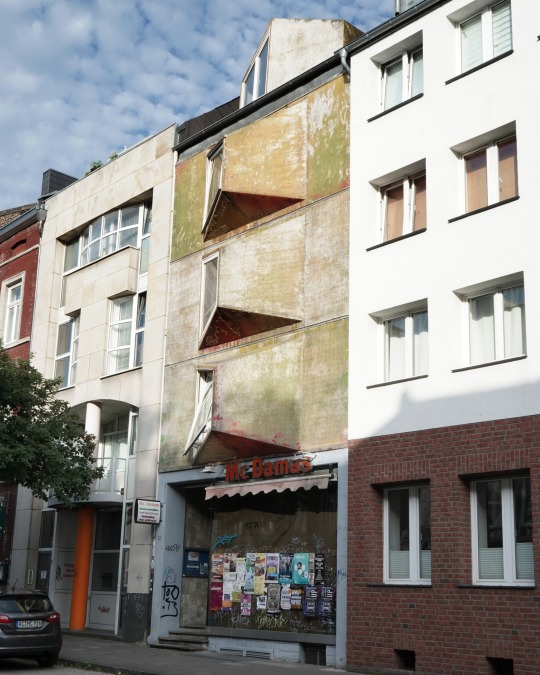
Apartment and Commercial Building (1969) in Aachen, Germany, by Karl-Heinz Gansfort
#1960s#apartment building#concrete#brutalism#brutalist#architecture#germany#nachkriegsarchitektur#nachkriegsmoderne#architektur#aachen#karl-heinz gansfort
615 notes
·
View notes
Text

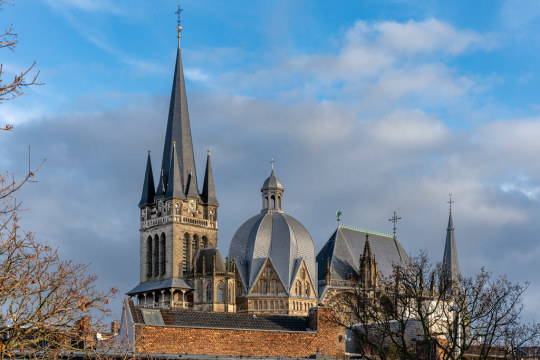
Aachen, Germany (by Richard Miguletz)
648 notes
·
View notes
Text

Aachen / Germany (by Johannes Berger).
#deutschland#europe#germany#aachen#architecture#city#urban#allemagne#travel#bucketlist#wanderlust#placestovisit#visitgermany
894 notes
·
View notes
Text
Charlemagne’s throne in the Byzantine style Cathedral in Aachen, Germany.
Charlemagne was called the first Holy Roman Emperor of the HRE, when uniting huge territories in Europe.
Full Aachen & Charlemagne video
youtube
The Cathedral was built in the style of the Eastern Roman Empire: Byzantium. This is after the fall of Rome. In the Middle Ages, and still centuries before the renaissance started in Italy.
The Aachen Dom / Cathedral of Aachen is a must see.
The detailed and splendid mosaics in the Cathedral are from after Charlemagne’s days.
#travel#wonderjourneys#tourism#wanderlust#youtube#touristdestination#germany#deutschland#aachen#holy roman empire#HRE#charlemagne#Charles the great#byzantine#cathedral#architecture#art#Europe#history
258 notes
·
View notes
Text

M O N S C H A U
74 notes
·
View notes
Photo

uniklinik – aachen, germany // 12-2016
© 2016 waidwund-photo
#photographers on tumblr#original photographers#architecture#architecture of doom#uniklinikum#uniklinik#aachen#facade#waidwund photo#josch schlegel#traces of human life
336 notes
·
View notes
Text
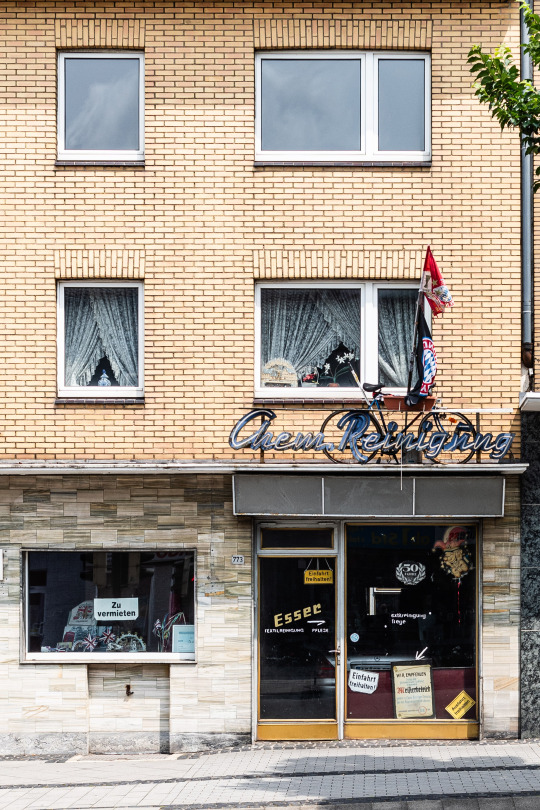
trierer straße // aachen brand
another highlight from trierer straße in brand. the curved invitation to drop off your laundry for cleaning. unfortunately, the shop no longer exists and nothing glows there. nn the other hand, the curtains from the windows above seem to date directly from the time of their creation, spotless white and without yellowing. If that's nothing.
#aachen#aachen brand#photograpy#architecture#architecture photography#moderne#neon sign#post war modern#post war architecture#german post war architecture#german post war modern#nrw#germany#rhineland#rhineland post war modern#rhineland post war architecture#advertisment#storefrontdesin#design#nrw post war architecture#nrw post war modern#nachkriegsarchitektur im rheinland#nachkriegsarchitektur#nachkriegsmoderne rheinland#nachkriegsmoderne deutschland#nachkriegsarchitektur deutschland#nachkriegsmoderne
56 notes
·
View notes
Text

15th-century Cloister of the Aachen Cathedral, North Rhine-Westphalia, Germany
German vintage postcard
#historic#15th-century#photo#briefkaart#vintage#aachen#cloister#the aachen cathedral#cathedral#th#north rhine-westphalia#sepia#westphalia#photography#carte postale#north#postcard#postkarte#postal#tarjeta#ansichtskarte#old#ephemera#postkaart#century#rhine#german#germany
39 notes
·
View notes
Text
Josephine visits Aachen Cathedral in 1804
“Berdolet presented Joséphine with the Talisman of Charlemagne featuring an emerald and a sapphire surrounded by some four dozen gems and pearls. The hair relic of the Virgin Mary behind the jewels had been transferred to the Agnus Dei reliquary and replaced with a cross relic. But Joséphine politely declined a grimy bone said to be from the emperor’s [Charlemagne] right arm, telling Berdolet that she already had ‘the support of an arm just as strong as Charlemagne’s.’”
— Susan Jaques, The Caesar of Paris: Napoleon Bonaparte, Rome, and the Artistic Obsession that Shaped an Empire, pp. 128
#The Caesar of Paris: Napoleon Bonaparte Rome and the Artistic Obsession that Shaped an Empire#Susan Jaques#Jaques#Josephine#josephine bonaparte#josephine de beauharnais#napoleonic era#napoleonic#Charlemagne#Aachen Cathedral#The Caesar of Paris#Napoleon#napoleon bonaparte#first french empire#french empire#Aachen#cathedral#relic#Christian#Christian relics#history
17 notes
·
View notes
Photo
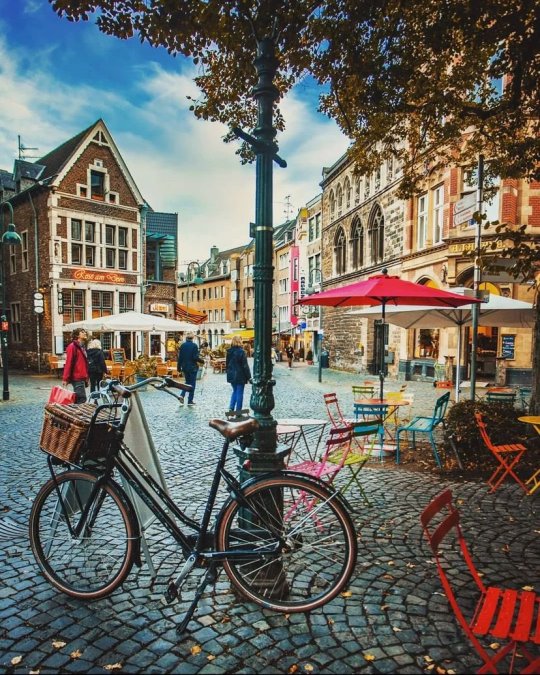
143 notes
·
View notes
Text

Kaiserbad Multi-Purpose Complex (1990-94) in Aachen, Germany, by Ernst Kasper. Photo by Ralph Richter.
551 notes
·
View notes
Text



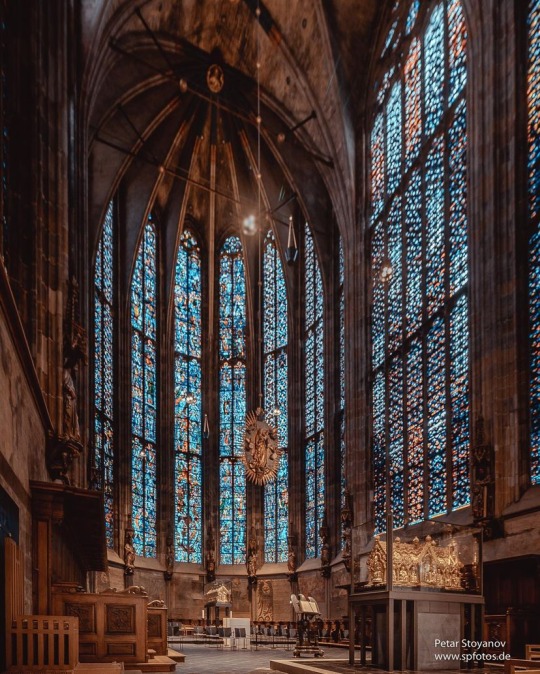
Aachen Cathedral, Germany, considered the oldest in northern Europe, was created around the Palatine Chapel from the times of Charlemagne (8th/9th centuries)
251 notes
·
View notes
Text
LIMAX
I’m tired, I’m bored, let’s talk about the RE18, also sometimes known as LiMAX or Drielandentrein (three countries train).

Euregio
This international regional train connects the region known as Euregio Maas-Rhine, the area around the point where Netherlands, Belgium and Germany meet. The region has a long shared and sometimes weird history. The main cities are Aachen (Germany, about 260,000 inhabitants), Liège (Belgium, about 200,000 people) and Maastricht (Netherlands, about 120,000 folks). A cluster of smaller towns around Heerlen (Netherlands, 86,000 citizens) forms a fourth major pole. Each of the regions gets roughly around half a million inhabitants each, but with a lot of green space in between. Here's a very crude map:

Blue are borders, black are relevant passenger rail lines, red is the one high speed line I'll talk about later.
This region is either right in the centre of Europe, or at the periphery of each of its respective countries, depending on what aspect you look at. Centre of Europe is undeniably better, but it requires international cooperation to work out. For me, living in Aachen, it’s great. My nearest Ikea is in the Netherlands, and I can watch French movies in cinemas in Liège.
But a lot of things aren't perfect, and the regional rail connections are a good example. Differing ticketing systems mean that it's not only expensive to cross the border, it's often very difficult to figure out what it costs at all. In a lot of places, trains only did short hops over the border, and then you had to change to a different train to get anywhere interesting. Some lines weren't even electrified yet. But in 2018, that was all about to change.
LIMAX
The Liège-Maastricht-Aachen express, in short LIMAX, was meant to change all that. The train is officially known as RE 18, which comes from the numbering scheme in the German state of Northrhine-Westphalia but is used for the entire route. It was supposed to run from Liège via Maastricht and Heerlen to Aachen, connecting all the major cities of the Euregio.
This particular train is a dutch project, and connecting Aachen with Liège only happens incidentally. There is a direct Aachen-Liège railway line, actually the oldest international line that’s still in use, including the oldest surviving German railway tunnel, and there is even a high-speed line that bypasses around 90% of the historic line. You can get from Aachen to Liège in less than half an hour on high speed trains (though regional trains are weird and impractical at the moment). This train line is really more about getting people in Heerlen a direct link to Liège, and people in Maastricht a direct link to Aachen.
The train
The train is operated by Arriva Netherlands Limburg, an independent subsidiary of Deutsche Bahn, who also operate all other rail and bus lines in the southern half of the dutch province of Limburg. They were actually placed second in the tender for this, but got promoted after it turned out that the actual winner Abellio (a daughter of the dutch state railroads NS) had illegal access to internal documents of previous operator and third-place scorer Veolia from France. To their credit, this came out because Abellio management learned of it and made it public, but rules are rules, so they still got disqualified. This is barely in the top three most interesting stories with Abellio, but we don’t have time for that here.
The service uses Stadler FLIRT 3 electric multiple units. FLIRT is an abbreviation, but nobody bothers remembering what it stands for. The manufacturer also offers or used to offer the TANGO (streetcar), the WINK (smaller version of the FLIRT), KISS (double-decker) and their newest high-speed train, the… SMILE. Cowards.
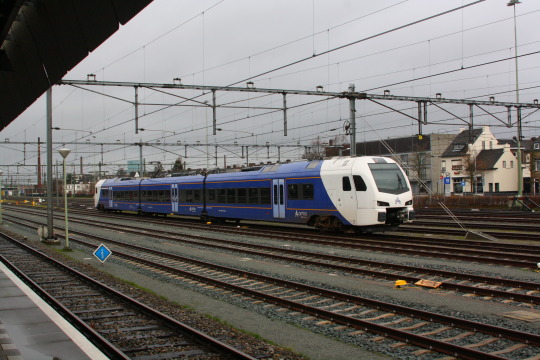
The FLIRTs for this service are specially equipped for the line, supporting all the different voltages in the overhead lines and all the other necessary support systems… almost. That’s going to become important later.
(Arriva Nederland Limburgs also has other trains, including other FLIRTs, that are only equipped for the Netherlands. I'll ignore them here.)
Services started in December 2018, theoretically. In practice the German leg of the service didn’t work yet. The problem was that the line from Heerlen to Herzogenrath (and then further to Aachen) used to be one of the few non-electrified lines in the region. It was electrified specifically for the RE18, and the work wasn’t quite finished yet. That got resolved, though, and the train is now working mostly well between Germany and the Netherlands. There are still some issues, like how it consistently announces that the doors will open on the left when they will open on the right and vice versa, but those are minor issues. The main problem for me is that it bypasses the Ikea station instead of stopping there.
The much bigger problem was the Belgian line, from (south of) Maastricht to Liège. The Belgian railway authorities were never that enthusiastic about the project to begin with, seeing how it was a private dutch company (though owned by the German government), and the platforms in the intermediate station of Visé were too low for step-free access and needed to be rebuilt. But the real main issue lay elsewhere: The new trains did not have ETCS.
Train control systems
We need a detour here about train control systems. Trains are controlled by signals. If a train passes a red signal, an accident usually follows, so over time every country developed different systems to make sure that doesn’t happen. The specific features of these vary widely. Some just warn the engineer that a red signal is ahead, and stop the train if the engineer doesn’t react. Some activate the emergency brake when the engineer passes a red signal, or when they don’t brake enough. More advanced ones for high speed lines tell the engineer the current allowed speed, upcoming speed changes and how far away they are, like a mini-GPS system, and constantly check that the engineer is driving within these limits. Many systems do a combination of different things.
Almost every country has its own of these systems, generally known by a cryptic abbrevation, and many countries have several. For example, Germany has PZB for all lines and additionally LZB for high-speed lines. The Netherlands have different versions of ATB, Belgium has TBL1+ and so on. The differences between them aren’t relevant for this post, but they’re all very different in what they do and how they do it. The RE 18 trains support all of them, except LZB because they’re not used on lines that make it necessary.
That’s expensive and annoying, so the European Union and European rail industries have developed a new system to replace all of them, the European Train Control System or ETCS. You will also hear the term ERTMS (European rail traffic management system), which includes ETCS and some other things, but in common parlance it usually means the same thing. Despite the name, it is also heavily used outside of Europe, e.g. on China’s high speed rail network.
And yes, that is very much a situation like the classic XKCD comic:

Source: XKCD 927, CC-BY-NC 2.5
(For americans reading this and wondering about PTC: That is a whole mess and almost everyone, including Wikipedia, explains it wrong, but for the purposes of this post we can just say that these systems and in particular ETCS are all something „like“ PTC.)
ETCS will only make sense once all European mainlines are equipped with it, which is still several decades away. But some countries are working harder than others to implement it. In particular, Belgium demands that all new trains since about 2015 have ETCS. Including the Stadler FLIRT for the RE 18.
In this case
The operator protested, because that requirement apparently came in while the trains were in production, and the line in question didn’t even have ETCS at the time (according to the latest Belgian maps it does now). To this day, the trains actually running there, as a Liège-Maastricht shuttle, do not have ETCS. So clearly it's not that essential… yet. Still, Belgian authorities refused to budge, so the trains had to be sent back to the manufacturer to get ETCS installed.
(Aside: ETCS is an open standard, and you can get ETCS equipment both for the tracks and for the trains from many different companies. Stadler, the manufacturer of these trains, only recently got into making ETCS equipment. Before that they had to buy it from competing train makers. These trains are among the first equipped with Stadler’s ETCS solution.)
The first train got it installed, returned to the line, and started tests. It worked well in the Netherlands, it worked well in Germany, it ran into Aachen station and worked well there, it ran back out of Aachen station and it stopped. Full emergency stop. After some testing it was determined that it always does an emergency stop when running out of Aachen station. And nobody is really sure why.
The low-down
We can make some vague guesses, though, because Aachen main station does have some ETCS equipment.

ETCS works partially with radio, but also with what are functionally giant RFID tags, the same basic concept like what you’ll find on a wireless credit card. They’re working at different frequencies and they’re designed for reliable reading at 450 km/h, but the basic idea is pretty much the same. These tags, known as „Balise“ (French for beacon) or Eurobalise, are mounted in the middle of the track, and are often yellow, at least when new. They can either send the same data every time, or be controlled with a cable from a computer.
Not everybody loves ETCS, but everybody seems to like the Eurobalise. It’s simple technology that can transmit a lot of information, and so there are a number of non-ETCS uses for it.
One such use case is transmitting the information of an older train control system. That is what the Belgians do with their TBL1+ system. It’s the same system as TBL1 (there is also a TBL2, but that was a bad idea and is gone now), but it transmits its information with Eurobalises. The idea is that you update these balises later to also transmit ETCS signals. Older trains can just get a balise reader, newer trains can just get ETCS, and you have only a single type of thing in the track instead of two. Switzerland is the first country that is fully ETCS equipped thanks to such a strategy, and Belgium is following suit.
The other use case is the "ETCS-based class B transition". Sounds tough but really isn’t: ETCS has a mechanism to tell the train, "hey, ETCS is ending, switch to ATB/PZB/TBL/…". In this context "Class B" means any system that isn’t ETCS (and that is on the list of things that ETCS knows about, for this purpose). The system ensures that the train really does switch to the other system, and that it stops if the switch doesn’t work. That is very useful and so most border crossings at least in Germany use it these days, even if no other part of ETCS is seen anywhere.
Both of these use cases are well established and ETCS specifically allows for them. Aachen central station is particularly fun because here you will find both of them combined. It is the border station for (passenger) trains to Belgium, so several tracks can be switched to Belgium mode, with Belgian electricity, and with Belgian TBL1+ train control system. The Eurobalises in these tracks pull double duty: They tell trains whether to switch to Belgian or German train control systems, depending on where the route is set, and if the Belgian system is to be used, they also transmit the information from that.
This isn’t new, and has worked well for years. The only other two types of passenger trains approved for the Netherlands, Belgium and Germany (and in one case also France), the Thalys PBKA and the ICE 3M high speed trains, also run through this station and they also have ETCS equipment and it all works.
But something about the combination together with the ETCS equipment in the new trains just doesn’t mesh well. It’s possible that there’s a bug in the software of the train. It’s possible that there’s a bug in the coding of the balises. Maybe it's something else; ETCS is a complex standard with a lot of updates, and the equipment in Aachen hasn't been touched in a while.
A theory I read on a dutch forum said that these balises tell the train to switch to combined PZB+LZB mode, but the train only has PZB mode and gets confused. I don’t know enough about ETCS to know whether this is plausible (and I know way too much about this stupid system already). All we really know for sure is that there are people working on this, and they're not telling us any of the details.
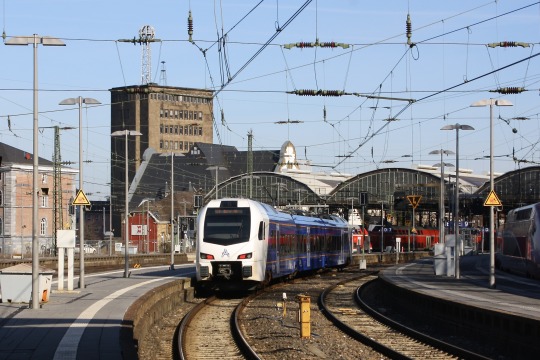
But after a few days where the train just didn’t run to Aachen at all, they found a solution. You know how I said that some tracks can be switched to Belgium mode? The others can’t, so why not just run the train into those?
That was actually easier said than done. Aachen has a lot of tracks, but most of them are used for parking trains. Most German regional trains to Aachen end in Aachen, and then wait here for half an hour or so until they return to where they came from. This isn’t required by the track layout or anything, it’s just convenient because that way, delays don’t build up quite as much. And the best location for that pause is, of course, right at the edge of the country. Centre of Europe? Yeah, sure, whatever…
So the solution is now that the RE18 runs into track 3 and stops in the middle of the platform, where it unloads all passengers. Then it drives forward to the end of the platform, and stays there. Another train, the RB33, pulls in behind it (there’s a red signal between them, don’t worry), and waits for its time to depart. Eventually it does, and shortly thereafter, the RE18 runs back to the middle of the platform, and then a few minutes later, back out again. It’s a silly little dance, but so far nobody has found a better solution.

(Before you start, the end of platform 3 is very narrow and at a non-accessible height, so the train can't just load and unload there.)
As for the Belgian side of things, through-services to Liège will start this December! Woohoo! It seems this thing is finally working.
The Future
The long-term hope is to turn this from an hourly to a half-hourly service. It already is for most of its length, but right now the trains stop in Herzogenrath, just after the German border, because there is no space in the schedule to run them to Aachen yet.
Another hope is to create a completely new service from Aachen to Eindhoven, also using the same trains. Eindhoven wants to be connected to the German ICE network, Aachen wants to be connected to the dutch train network, so this sounds all great. Personally, I have doubt that these trains have enough capacity, but they are currently the only ones that would work. An issue with that is the actual line over the border. This used to be double-tracked, then got single-tracked. Now they want to double-track it again, but when it was electrified, they put the power poles right where the second track used to be. Not sure what they were thinking there.
All of these projects will take years, if not decades, and have in fact already taken years or decades. I’ve been in Aachen since 2007, and things like electrifying the line over the german-dutch border or creating a direct train from Aachen to the center of the Netherlands (or at least Eindhoven) have been in discussion for at least since then. On the one hand, it’s frustrating how slowly all these things are going. On the other, they are happening at all, and looking back ten years or so, it’s quite nice to see what has been accomplished.
I guess my one wish is that they’d finally let the train stop in Heerlen Woonboulevard, I’m tired of changing trains to get to Ikea.
24 notes
·
View notes
Text

A a c h e n
44 notes
·
View notes
Photo
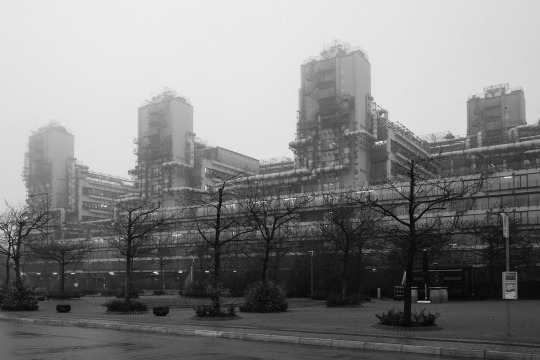
uniklinikum – aachen, germany // 12-2016
© 2016 waidwund-photo
#original photographers#photographers on tumblr#architecture#infrastructure#70s architecture#uniklinikum#aachen#waidwund photo#josch schlegel#traces of human life
152 notes
·
View notes
